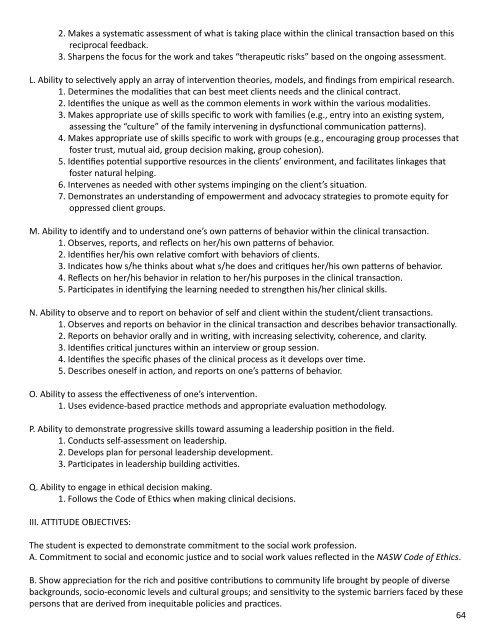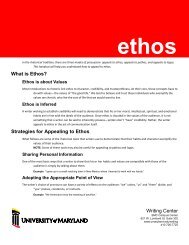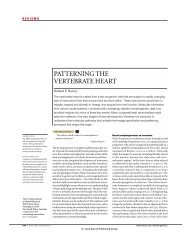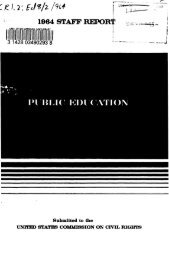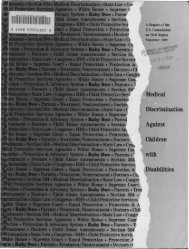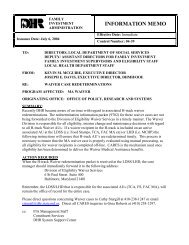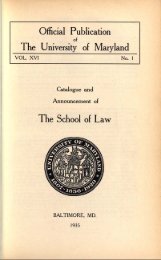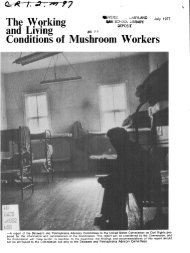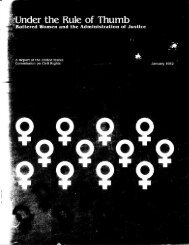Field Manual for 2013-2014 - University of Maryland School of ...
Field Manual for 2013-2014 - University of Maryland School of ...
Field Manual for 2013-2014 - University of Maryland School of ...
Create successful ePaper yourself
Turn your PDF publications into a flip-book with our unique Google optimized e-Paper software.
2. Makes a systematic assessment <strong>of</strong> what is taking place within the clinical transaction based on this<br />
reciprocal feedback.<br />
3. Sharpens the focus <strong>for</strong> the work and takes “therapeutic risks” based on the ongoing assessment.<br />
L. Ability to selectively apply an array <strong>of</strong> intervention theories, models, and findings from empirical research.<br />
1. Determines the modalities that can best meet clients needs and the clinical contract.<br />
2. Identifies the unique as well as the common elements in work within the various modalities.<br />
3. Makes appropriate use <strong>of</strong> skills specific to work with families (e.g., entry into an existing system,<br />
assessing the “culture” <strong>of</strong> the family intervening in dysfunctional communication patterns).<br />
4. Makes appropriate use <strong>of</strong> skills specific to work with groups (e.g., encouraging group processes that<br />
foster trust, mutual aid, group decision making, group cohesion).<br />
5. Identifies potential supportive resources in the clients’ environment, and facilitates linkages that<br />
foster natural helping.<br />
6. Intervenes as needed with other systems impinging on the client’s situation.<br />
7. Demonstrates an understanding <strong>of</strong> empowerment and advocacy strategies to promote equity <strong>for</strong><br />
oppressed client groups.<br />
M. Ability to identify and to understand one’s own patterns <strong>of</strong> behavior within the clinical transaction.<br />
1. Observes, reports, and reflects on her/his own patterns <strong>of</strong> behavior.<br />
2. Identifies her/his own relative com<strong>for</strong>t with behaviors <strong>of</strong> clients.<br />
3. Indicates how s/he thinks about what s/he does and critiques her/his own patterns <strong>of</strong> behavior.<br />
4. Reflects on her/his behavior in relation to her/his purposes in the clinical transaction.<br />
5. Participates in identifying the learning needed to strengthen his/her clinical skills.<br />
N. Ability to observe and to report on behavior <strong>of</strong> self and client within the student/client transactions.<br />
1. Observes and reports on behavior in the clinical transaction and describes behavior transactionally.<br />
2. Reports on behavior orally and in writing, with increasing selectivity, coherence, and clarity.<br />
3. Identifies critical junctures within an interview or group session.<br />
4. Identifies the specific phases <strong>of</strong> the clinical process as it develops over time.<br />
5. Describes oneself in action, and reports on one’s patterns <strong>of</strong> behavior.<br />
O. Ability to assess the effectiveness <strong>of</strong> one’s intervention.<br />
1. Uses evidence-based practice methods and appropriate evaluation methodology.<br />
P. Ability to demonstrate progressive skills toward assuming a leadership position in the field.<br />
1. Conducts self-assessment on leadership.<br />
2. Develops plan <strong>for</strong> personal leadership development.<br />
3. Participates in leadership building activities.<br />
Q. Ability to engage in ethical decision making.<br />
1. Follows the Code <strong>of</strong> Ethics when making clinical decisions.<br />
III. ATTITUDE OBJECTIVES:<br />
The student is expected to demonstrate commitment to the social work pr<strong>of</strong>ession.<br />
A. Commitment to social and economic justice and to social work values reflected in the NASW Code <strong>of</strong> Ethics.<br />
B. Show appreciation <strong>for</strong> the rich and positive contributions to community life brought by people <strong>of</strong> diverse<br />
backgrounds, socio-economic levels and cultural groups; and sensitivity to the systemic barriers faced by these<br />
persons that are derived from inequitable policies and practices.<br />
64


